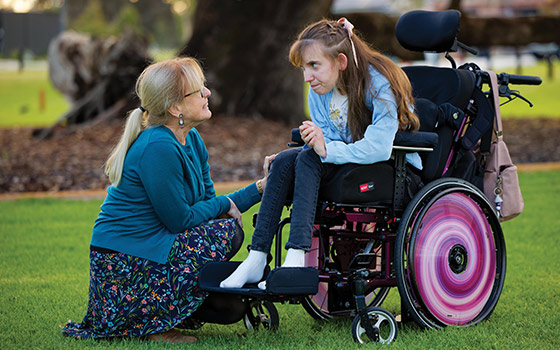Search
Research
Who suffered most? Parental stress and mental health during the COVID-19 pandemic in GermanyThis study examines gender and socioeconomic inequalities in parental psychological wellbeing (parenting stress and psychological distress) during the COVID-19 pandemic in Germany. Background: The dramatic shift of childcare and schooling responsibility from formal institutions to private households during the pandemic has put families under enormous stress and raised concerns about caregivers’ health and wellbeing.
Research
Investigating facial phenotype in autism spectrum conditions: The importance of a hypothesis driven approachThe identification of differences in the facial phenotype of individuals with ASC may contribute to efforts to promote early identification of the condition and help elucidate etiological pathways.
Research
Patterns of sedentary time and ambulatory physical activity in a Danish population of girls and women with Rett syndromeWe aimed to: (1) describe the patterns of sedentary time and daily steps and (2) identify the association of individual and environmental characteristitics.
Research
Measuring use and cost of health sector and related care in a population of girls and young women with Rett syndromeThis study measured use and cost of health sector and related services in Rett syndrome and effects of socio-demographic, clinical severity and genetic...
Research
Level of purposeful hand function as a marker of clinical severity in Rett syndromeWe investigated relationships between hand function and genotype and aspects of phenotype in Rett syndrome
Research
Survival with Rett syndrome: comparing Rett's original sample with data from the Australian Rett syndrome DatabaseRett syndrome is a severe neurodevelopmental disorder that typically affects females. Little is known about the natural history and survival time of these femal
Research
Valproate and risk of fracture in Rett syndromeThis study investigated the relationships between fracture risk and commonly used AEDs in Rett syndrome.
Research
Early determinants of fractures in Rett syndromeThe goals were to compare the fracture incidence in Rett syndrome with that in the general population and to investigate the impact of genotype, epilepsy,...
Research
Lost in translation: translational interference from a recurrent mutation in exon 1 of MECP2Rett syndrome (RTT) is an X linked neuro-developmental disorder affecting mostly girls. Mutations in the coding region of MECP2 are found in 80% of classic...

The Quality of Life Inventory - Disability
